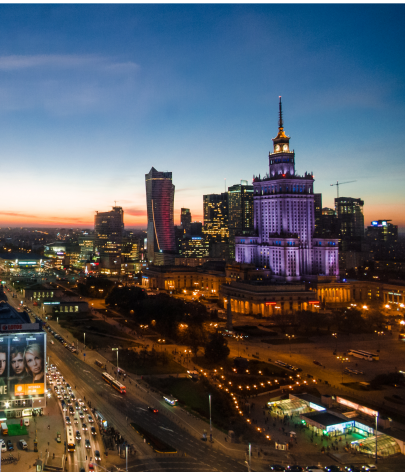About
A rapid decarbonisation of electricity generation will be essential to limiting global warming to 1.5°C.
In this report, we use the National Energy & Climate Plans (NECPs) of every EU country to assess the planned progress in the power sector over the coming decade.
We compare each EU country on a wide range of power sector metrics and identify the seven countries that are the main barriers to reducing emissions from electricity generation in the EU.
Executive summary
What do National Energy and Climate Plans tell us about the EU power sector in 2030?
A rapid decarbonisation of electricity generation will be essential to limiting global warming to 1.5°C.
European Programme Lead, Ember
The 2020s are a key decade for action on climate change. Clean electricity is essential for the transition to a sustainable economy. Although our analysis finds that many EU countries already have ambitious plans to decarbonise their electricity systems, we also identified seven key countries that are blocking overall progress in the EU. Unless they change course, reaching a 55% emissions reduction will be extremely challenging – let alone 60%.
Renewables
EU not yet planning for the necessary scale of renewables growth
More ambitious climate targets, for example, a 65% reduction by 2030 and climate neutrality by 2040 would require a significantly more radical scale-up of wind and solar over the same time horizon.
Nuclear
NECPs indicate a lessened role for nuclear across the EU
Nuclear power is a source of zero carbon electricity, however the NECPs indicate that total electricity generated from nuclear power plants in the EU-27 is expected to fall by ~19% by 2030.
Fossil fuels
Low ambition on phasing out fossils
Fossil fuels are still expected to generate ~ 25% of EU electricity by 2030.
Emissions
A handful of EU countries will drive emissions
By 2030, four countries (Germany, Poland, Italy & Czechia) will be responsible for ~ 70% of all the emissions from electricity generation in the EU.
Emissions Intensity
Mismatch between national plans and EU targets
By 2030, Poland, Czechia, Bulgaria and Germany will have the dirtiest electricity grids in the EU due to the high share of fossil fuels and in particular, coal.
As a result, the EU is not on track to deliver the EU Commission’s recommended 55% reduction in total emissions by 2030. To achieve this target, progress needs to be made in seven key countries and wind and solar deployment plans must increase by a third.
Seven countries blocking EU progress
Laggards risk being responsible for 80% of EU power sector emissions by 2030
In 2030, Romania will have one of the dirtiest electricity grids in the EU, due to a higher than average reliance on fossil fuels and a notable role for coal. Romania is planning one of the lowest deployment rates of renewable electricity in the EU over the coming decade. The planned deployment rate of renewable electricity is slower than last decade – despite huge cost reductions in wind and solar.
Conclusion
NECPs reveal which countries are a barrier to EU power sector decarbonisation
From the preceding analysis of the NECP data we conclude that there are seven countries that are the key barriers to a rapid reduction in EU power sector emissions.
- Germany and Italy. Their NECPs indicate progress in the power sector is slow over the next decade and this is a concern given the size of their economies and electricity demand.
- Combined the countries account for approximately ~ 40% of projected 2030 power sector emissions.
- Both have relatively high shares of fossil fuels in their electricity mixes in 2030, with coal still expected to play a major role in Germany.
- Both see relatively modest reductions in the share of fossil fuels in their electricity mixes to 2030, Italy’s wind and solar deployment is modest, Germany’s more impressive planned deployment is partly offset by the nuclear phase-out, such that progress in both countries is broadly similar.
Supporting Material
Downloads
- Vision or division - PDF (2 MB)
- NECP-Factsheet-Germany - PDF (1,007 KB)
- NECP-Factsheet-Germany-Deutsche-Version- - PDF (1 MB)
- NECP-Factsheet-Czechia - PDF (1 MB)
- NECP-Factsheet-Czechia-ceska-verze - PDF (1 MB)
- NECP-Factsheet-Italy - PDF (912 KB)
- NECP-Factsheet-Italy-Versione-italiana- - PDF (945 KB)
- NECP-Factsheet-Bulgaria - PDF (973 KB)
- NECP-Factsheet-Bulgaria-българска-версия - PDF (1 MB)
- NECP-Factsheet-Romania - PDF (869 KB)
- NECP-Factsheet-Romania-versiune-romana - PDF (908 KB)
- NECP-Factsheet-Belgium - PDF (953 KB)
- NECP-Factsheet-Belgium-Vlaamse-versie- - PDF (997 KB)
- NECP-Factsheet-Belgium-version-francaise - PDF (990 KB)
- NECP-Factsheet-Poland - PDF (1 MB)
- NECP-Factsheet-Poland-wersja-polska - PDF (2 MB)
- Media Pack - Ember - Analysis of NECPs, Vision or Division_ - ZIP (47 MB)




